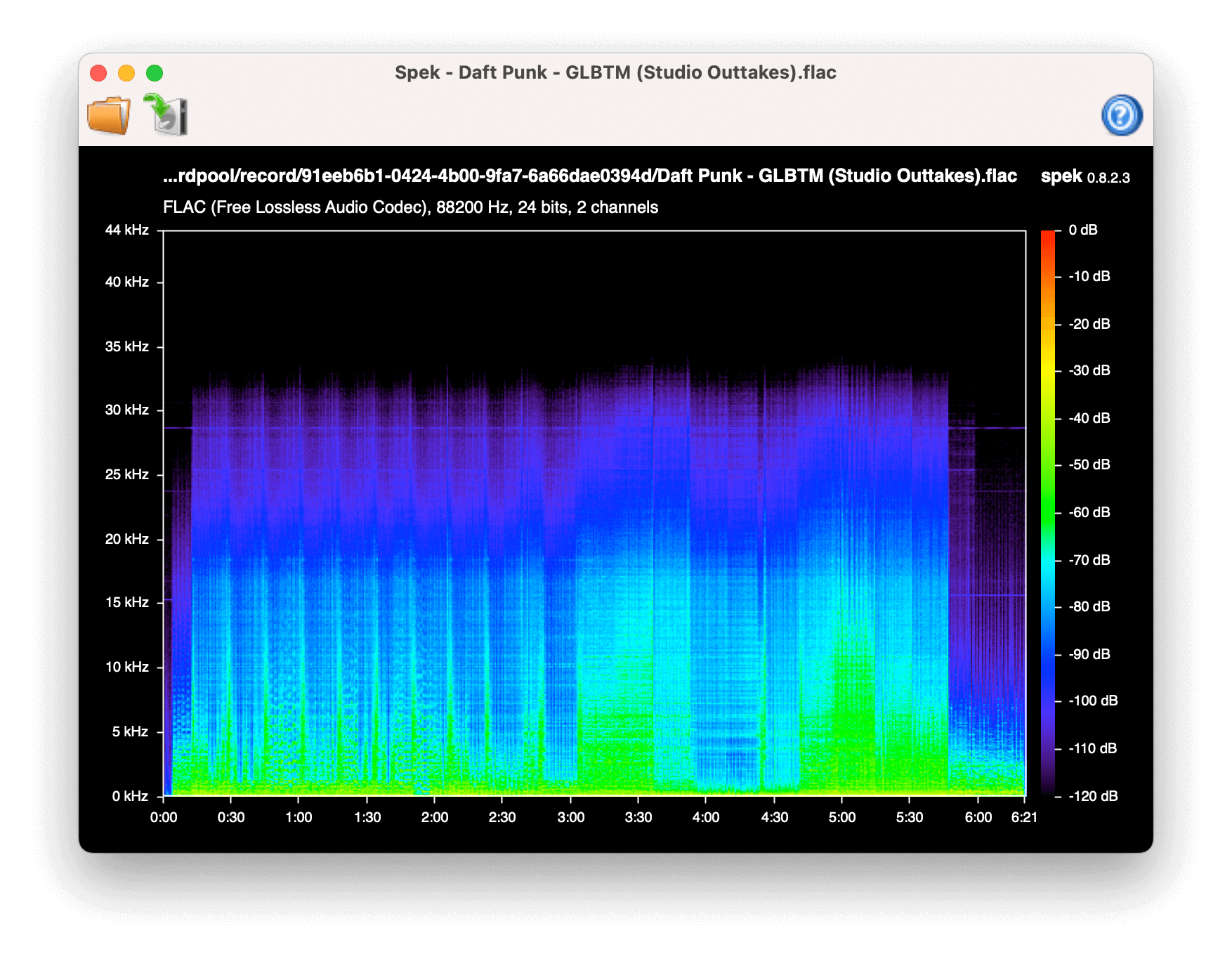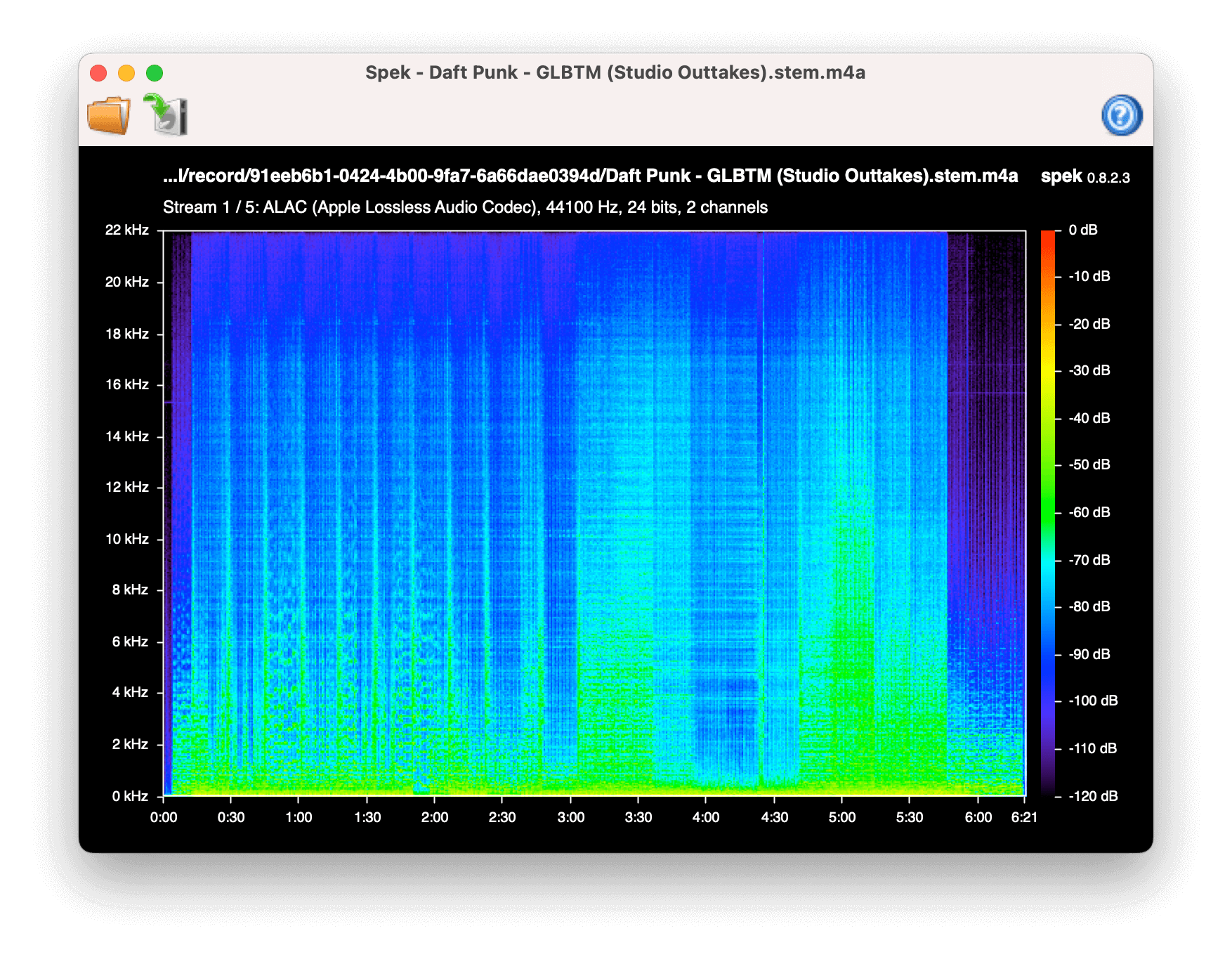🎛 Stemgen
Stemgen is a Stem file generator. Convert any track into a Stem and have fun with Traktor.
A Stem file is an open, multi-channel audio file that contains a track split into four musical elements – bass, drums, vocals, and melody, for example. With each element available independently, you have more control over the music you play.
Stemgen uses demucs to separate the 4 stems and ni-stem to create the Stem file.
Our new file contains four stems: drums, bass, other (melody) and vocals.
Note
Traktor Pro 4 includes stem separation! Fortunately, it is backward-compatible and you can upgrade without any issue. But unfortunately, Stemgen still makes sense because:
- Stemgen is the only way to create lossless ALAC stem files... for now! Please make yourself heard on the forum if you think lossless stems matters
- Stemgen is the only way to create your own stem files from Ableton Live and from a CLI
- Stemgen writes the metadata of the original files to the stem files, so you can easily sync them between computers
"It's no secret that I'm fully behind the approach to encourage individuality in creativity and for artists to play differently. Stems is a new format that mirrors my constant quest for spontaneity to drive the art of performance forwards. I hope that releasing my album From My Mind To Yours in this format, mastered by LANDR, inspires others to support the approach and bring even more flexibility to the art of DJing amongst its most progressive supporters." – Richie Hawtin
Stems are fun but nobody's releasing them. Stemgen is a way to create your own stems with only one command.
May 2023 Update: I saw François K last week in Paris at the Loft Babies party and I discovered that he's playing with Stems. I highly recommend checking out his videos on YouTube: https://www.youtube.com/playlist?list=PLCr4LSsJFk48tmNoKn-l7mgsB5XUd2Af9. He's a legend and a true pioneer. I'm so happy to see him having fun with Stems. And trust me: it's even better in real life. Can't wait to see him again!
"There is a really big difference between using a tool, a computer as a tool, to make it do specific things we want it to do, in the manner in which we want it to accomplish it. In most other situations, we all find ourselves dealing with a pre-programmed or pre-determined path that the software designer has decided we must use the software in order to get certain things done. And I think that makes it that we, little by little, become controlled by the path that was designed by the people who wrote the software and forced into these gullies that they created of usage, that this is how we are supposed to be doing things. And after a while I think it's making us forget who we were and what the essence of what the music was supposed to be about and really represented.
And this right here -- I have to be honest -- it's groundbreaking to me in that sense. It's putting me back in touch with using these tools that I'm using right now as mere instruments of my will, rather than me being forced around the way they were designed to be operated, and in the process losing the very essence of what I was trying to express. Goddammit!" – François K, Expansions (Live Stems Dub and Talk)
- Highest quality: ALAC stems by default, or AAC using the best encoder and quality possible.
- Automatic metadata tagging: scraping metadata from the master file and writing it back to the stem file.
- Batching: you can use this CLI to batch your stem creation and/or create a powerful workflow.
- Universal: works on macOS, Windows and Linux.
- python >= 3.9 https://www.python.org
- demucs v4 https://github.com/facebookresearch/demucs
- ffmpeg https://www.ffmpeg.org
- sox https://sox.sourceforge.net
- mutagen https://mutagen.readthedocs.io
You can use stemgen.py to generate stems:
$ python3 stemgen.py track.wav- Have fun! Your new
.stem.m4afile is inoutputdir - Supported input file format are
.wav.wave.aif.aiff.flac
You can use stem.py to create stems:
$ python3 stem.py -i track/track.0.wav- You need to follow this naming convention:
[TRACK_NAME].[TRACK_NUMBER].[FILE_EXTENSION] TRACK_NAMEshould be identical for all files- Please use
0as theTRACK_NUMBERfor the master track. Example:'track.0.wav'for the master file then'track.1.wav'for the first stem, etc... - Have fun! Your new
.stem.m4afile is inoutputdir - Supported input file format are
.wav.wave.aif.aiff.flac
You can use Ableton Live to create stems:
$ python3 ableton.py
python3 -m pip install -U demucspython3 -m pip install mutagenbrew install coreutils ffmpeg sox
python3 -m pip install -U demucspython3 -m pip install mutagensudo apt install ffmpeg sox gpac(or install ffmpeg with https://github.com/markus-perl/ffmpeg-build-script if you plan to encode in AAC)
python3 -m pip install -U demucspython3 -m pip install mutagen- You might need Microsoft C++ Build Tools https://visualstudio.microsoft.com/visual-cpp-build-tools for Demucs
- Download ffmpeg from https://www.ffmpeg.org/download.html
- Download sox from https://sourceforge.net/projects/sox/files/sox
- Add ffmpeg and sox to your PATH
If you plan to encode in AAC, you should install qaac. Here is a quick guide:
- Download qaac from https://github.com/nu774/qaac/releases
- Move the content of
x64toC:\Program Files\qaac(orx86depending on your system) - Add
C:\Program Files\qaacto your PATH
Then, to use Audio Toolbox from Apple:
git clone https://github.com/nu774/makeportable.gitcd makeportable- Download the iTunes installer from https://www.apple.com/itunes/download/win64
- Copy the iTunes installer to the
makeportablefolder makeportable.cmd- Copy the newly created folder
QTfiles64to yourC:\Program Files\qaacfolder
Then, to support FLAC files:
- Download FLAC from https://github.com/xiph/flac/releases
- Copy the
libFLAC.dllfile from theWin64folder (orWin32depending on your system) - Paste it in your
C:\Program Files\qaacfolder
Enjoy! You can now encode AAC stems with Apple Audio Toolbox, the highest quality AAC encoder.
- Stem and Stemgen supports 16-bit and 24-bit audio files!
- Stemgen needs to downsample the track to 44.1kHz to avoid problems with the separation software because the models are trained on 44.1kHz audio files. Stem uses the original sample rate.
- You may notice that the output file is pretty big. Apple Lossless Codec (ALAC) for audio encoding is used for lossless audio compression at the cost of increased file size.
If you plan to use Stemgen on copyrighted material, make sure you get proper authorization from right owners beforehand.
MIT



